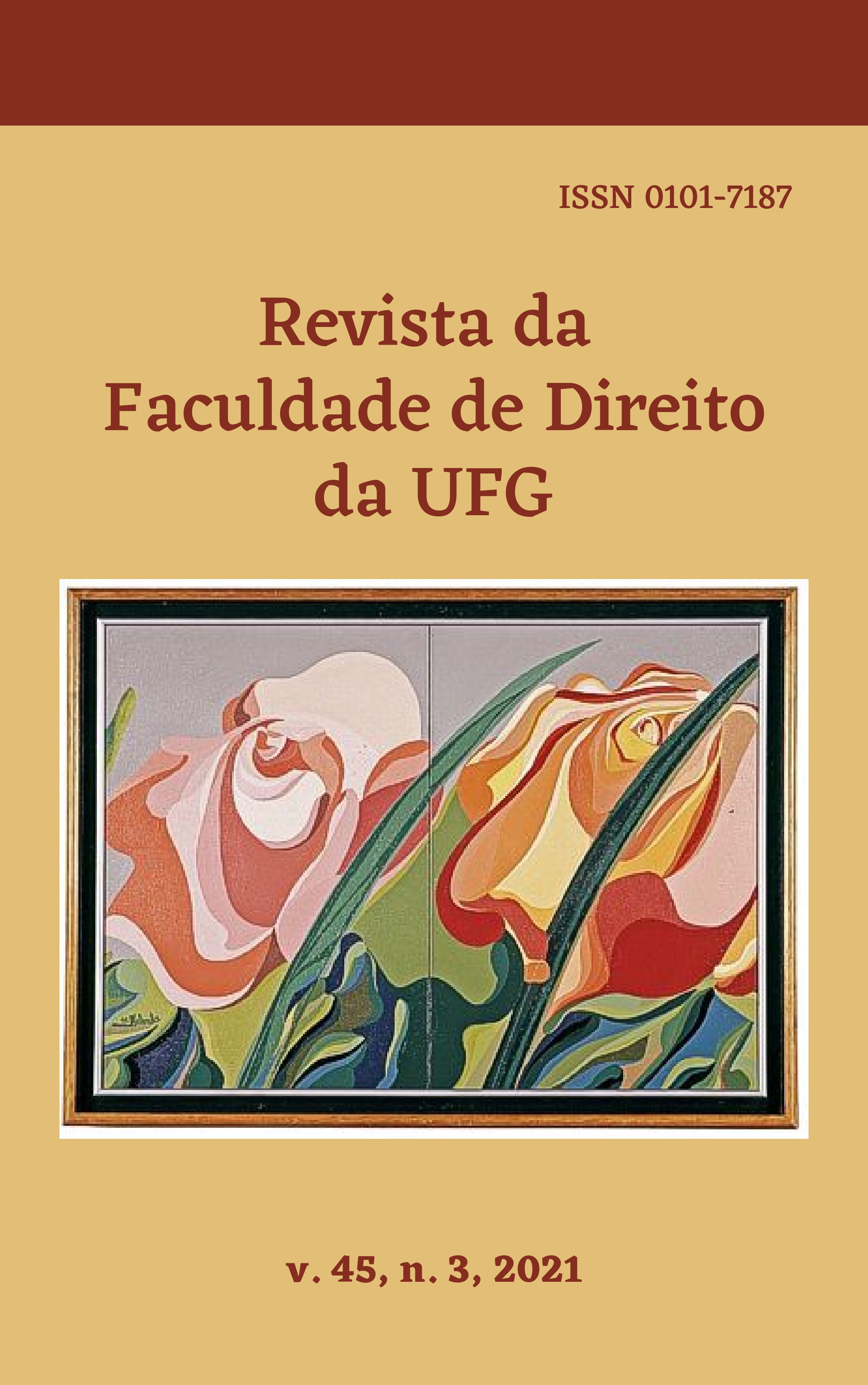BETWEEN GEOGRAPHICAL INDICATIONS AND INTANGIBLE HERITAGE IN THE HAVANA CLUB CASE
DOI:
https://doi.org/10.5216/rfd.v45i3.68738Abstract
The legal protection of geographical indications (GIs) is an indispensable element in balancing the local versus global dichotomy. The objective is to analyze the international conception of GIs and their relationship with intangible cultural heritage, exposing challenges and opportunities in the context of Cuban legislation and taking the Havana Club case as a reference. For this, we define as the hypothesis of the study that: GIs in the Cuban reality constitute an example of the need to reinterpret GIs from the role of intangible cultural heritage and the role of the land in the materialization of its protection. The methodology used is of a transdisciplinary approach and for this it relies on logical, historical-social, cultural and legal methods, assuming the combination of methods from the social and legal sciences in particular. As a result, it is concluded that the expansion and inclusion of intangible cultural heritage and its interrelation with GIs is essential in the materialization of the legal protection of GIs in the Cuban context, as it will allow the protection of local cultural values and increase their legal guarantees. The study's contribution lies in a new interpretation of GIs in relation to intangible cultural heritage.
Downloads
References
Accioly, Hildebrando. Direito Internacional Público. 20. São Paulo: Saraiva, 2018.
AGDOMAR, Michelle. "“Removing the Greek from Feta and Adding Korbel to Champange: the Paradox of Geographical Indications in International Law." Fordham Intellectual Property Media and Enterntainment Law Journal 18 (diciembre 2007): 541-608.
Ana Carvalho, Christian Hotti. "Le patrimoine culturel immatériel: Premiéres expériences en France. ." Etnográfica 17 (2013): 430-432.
Arizpe, Lourdes. "Los Debates internacionales en torno al patrimonio cultural inmaterial." Centro Regional de Investigaciones Multidisciplinarias - UNAM 13, no. 38 (septiembre-diciembre 2006): 16.
Barbero, Jesús Martín. "La globalización en clave cultural: una mirada latinoamericana." Coloquio Internacional Globalismo y Pluralismo. Montreal, 2002. 26.
Bassos, Maristela. O Direito Internacional da Propriedae Intelectual. 1era. Vol. 1. Porto Alegre: Livraria do Advogado, 2000.
Benhamou, Françoise, and David Thesmar. "Valoriser le patrimoine culturel de la France." Unesco, Paris, 2011, 162.
Blakeney, Michael. "Geographical Indications: What Do They Indicate?" The WIPO Journal: Analysis of Intellectual Property Issues 6 (1 2014): 50-56.
Brasil. "Lei 8576/2019 de 23 de outubro de 2019." Rio de Janeiro: Diario Oficial, 2019. 2.
CHESMOND, Rhonda. "“Protection or privatisation of culture? The cultural dimension of the international Intellectual Property debate on geographical indications of origin." European Intellectual Property Review 29, no. 9 (2007): 379-388.
Circuit, United States Court of Appeals for the Third. "Pernod Ricard USA, LLCv. Bacardi U.S.A, Inc., 653 F.3d241(2011)." United States Court of Appeals for the Third Circuit, 4 de Agosto de 2011, 22.
E.U.A. "Lanham Act." n.d.
Espeitex, Elena. "Patrimonio alimentario y turismo: una relación singular." Pasos 2 (febrero 2004): 193-213.
EUA, Departamento de Estado. "§ 515.582 Importation of cetain goods and services produced by independent Cuban entrepreneurs." https://www.state.gov/the-state-departments-section-515-582-list/. Washintong DC, 2015.
Francia. "Loi nº2014-1170." Journal Officiel de la République Française. Paris: legifrance.gouv.fr, 2014. 79.
Gangjee, Dev S. "Geographical Indications and Cultural heritage." The WIPO Journal 4 (abril 2012): 11.
Hafstein, Valdimar. Intangible heritage as a list: from masterpieces to representation. Edited by Natsuko Akagawa Laranje Smith. Vol. 1er. New York: Routledge, 2009.
James, Erik. Private International Law. Haya: HCCH, 2010.
Lina Sarai Mejía López, Miriam Bravo Rodríguez, Sonia Edith Mejía Castillo. "La gastronomía como símbolo en la cultura." Culinaria. REvista virtual especializada en Gastronomía 7 (enero/junio 2013): 50-64.
Marchenay, Laurence Bérard and Philippe. "Local products and geographical indications:taking account of local knowledge and biodiversity." International Social Science Journal. Cultural Diversity and Biodiversity 187 (mayo 2006): 109-116.
Márquez, Isabel Villaseñor Alonso y emiliano Zolla. "Del patrimonio cultural inmaterial o la patrimonialización de la cultura." Cultura y representaciones sociales 6 (marzo 2012).
Miranda, Pontes De. Tratado de Direito Privado. 1era. Campinas: Bookseller, 2002.
OMPI. Las Indicaciones Geográficas. Ginebra : OMPI, 2017.
—. "Principios básicos de la Propriedaad Industrial." OMPI Nº895(S). Ginebra: OMPI, 2014. 16-17.
Prieto, Marta Valdez. "Del Control constitucional en Cuba. Propuestas necesarias." Cuestiones Constitucionales. Revista Mexicana de Derecho Constitucional 39 (julio-diciembre 2018): 43-64.
Riley, Michael. "Cigars and Rum: Hazardoust to the Health of Intellectual Property Law? How the Cohiba Cigar and Havana Club Rum Cases Reveal a Carve-Out for the Intellectual Property Disputes with a Cuba Nexus." University Of Miami Inter-American Law Review 38 (enero 2007): 44.
Santiago, Yanis Rosana Blanco. LA Protección de las Indicaciones Geográficas en el Comercio Internacional: Recepción y Efectividad en el Ordenamento Jurídico Puertorriqueño. Vol. 1. Madrid: Universidad Complutense Madrid, 2017.
Tunkin, G. I. Curso de Derecho Internacional . Moscú : Progreso, 1979.
UNESCO. "11. COM. Cerveza Belga en la Lista del Patrimonio Cultural Inmaterial de la Humanidad." Paris: UNESCO , 2016. 2.
—. "Convención para la Slavaguardia del Patrimonio Cultural Inmaterial ." Paris: UNESCO, 2003.
Unit States Court of Appeals, Second Circuit. "Havana Club Holding S.A v. Galleon S.A." Febrero 2000.
Usenko, E. T. "Problemas teóricos en la relación del derecho internacional y el derecho interno." Anuario Soviético de derecho internacional, 1977: 87 y sigs.
Vicente, Darío Moura. A tutela internacional da propriedade intelectual. Coimbra: Almedina, 2008.
Vivez, Jacques. Les appellations dórigine-Législation et Jurisprudence Actuelles. 1era. Bordeaux: Faculté de Droit de L´Université de Bordeaux , 1932.
WOLF, David B. "Effective Protection against Unfair Competition under Section 44 of the Lahham Act”, Trademark Rep." 82 (1992): 33-57.
Downloads
Published
How to Cite
Issue
Section
License
Os Autores que publicam nesta revista concedem à Revista da Faculdade de Direito da UFG uma licença mundial, sem royalties, sujeita aos termos e condições da Licença Jurídica Creative Commons Atribuição 3.0 Brasil Creative Commons Attribution License
Os autores concedem à RFD UFG todos os direitos autorais sobre os artigos nela publicados, que os mantêm com exclusividade até o advento de domínio público sobre os mesmos.
























